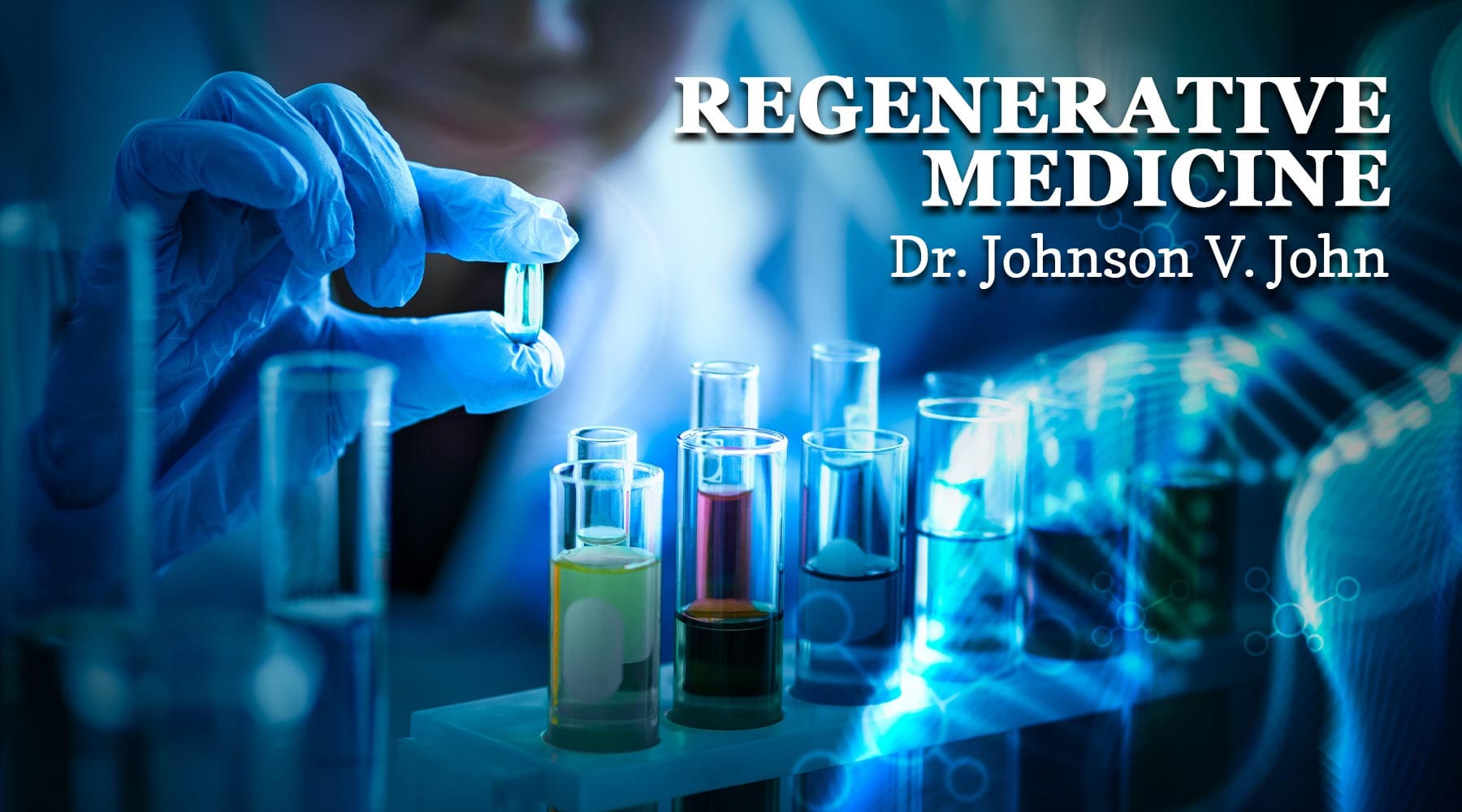Don’t you remember, as a child, holding a lizard in your clenched hand, only to find its wriggling tail when you opened it? Although it is a traumatic experience for the creature, it is thrilling to the mischievous, inquisitive young mind. A few days later, in your backyard, to your amazement, you might have observed the same lizard with a small growth from its broken tail! Some lizards and other animals can lose their tails or arms, but quickly grow new ones. You might wonder why it did not happen to other animals. You might also ask, why humans aren’t as good at regenerating their organs except the liver. Perhaps, these questions might lead you to a recent scientific field of study, called “Regenerative Medicine.” This promising field of regenerative medicine aims at restoring the structure and functionality of damaged organs and tissues in animals as well as humans.
Unlike the conventional clinical approaches, which focus primarily on alleviating symptoms, regenerative medicine targets the underlying cause of a disease or an injury to regenerate healthy tissue or organs. In modern science, biomaterials, cell therapy, medical devices, bioelectronics, and artificial organs have been widely employed to achieve these goals.
When these methods are combined, they can promote the healing process where needed or completely restore the function of a damaged organ. Regenerative medicine is a relatively new field that brings together experts from biology, chemistry, computer science, engineering, genetics, medicine, robotics, and other areas to find answers to some of the most complex medical problems.
(i) Biomaterials: The development of extracellular imitative scaffold engineering and their various hard and soft tissue engineering in the defect or injury site will be the primary focus of biomaterials-induced tissue repair and regeneration strategies.
(ii) Cell therapy: Due to the recent emphasis on personalized medicine, stem cell therapy has received widespread attention in regenerative medicine. One method by which our body repairs itself is by using stem cells. Studies have shown that tissue reconstruction is possible under the right conditions, if adult stem cells are extracted and injected at the site of a diseased or damaged tissue. Blood, fat, bone marrow, dental pulp, skeletal muscle, and other sources contain these cells. Scientists and clinicians are preparing stem cells to be injected into patients to repair diseased or damaged tissues.
(iii) Bioelectronics: The bioelectronics for tissue repair technology is aimed to accelerate large impaired healing and, thus, increase resilience by intervening directly in wound healing. In this platform, researchers are using bioelectronics and biomaterials to stimulate tissues, sensors to track the body’s complex response biochemically or biophysically to this stimulation, and adaptive learning algorithms to combine sensor data and tell actuators what to do. In the end, they hope to accomplish this by offering sophisticated medical interventions that can rapidly repair complex human tissues after damage.
(iv) Artificial organs: When an organ fails, the most common clinical strategy is to transplant it with a donor organ. The main obstacles to transplanting are a lack of donor organs and the requirement that the donor takes immunosuppressive drugs, which have side effects.Nearly all of today’s artificial organs are helpful as a resource solution, until healthy natural tissues and organs can regenerate. It makes no difference, if these tissues are grown within or outside a patient’s body. Researchers believe that artificial organ and regenerative medicine technologies need joint development programs. Future medical care will benefit from both man-made and natural substitute organ technologies.



